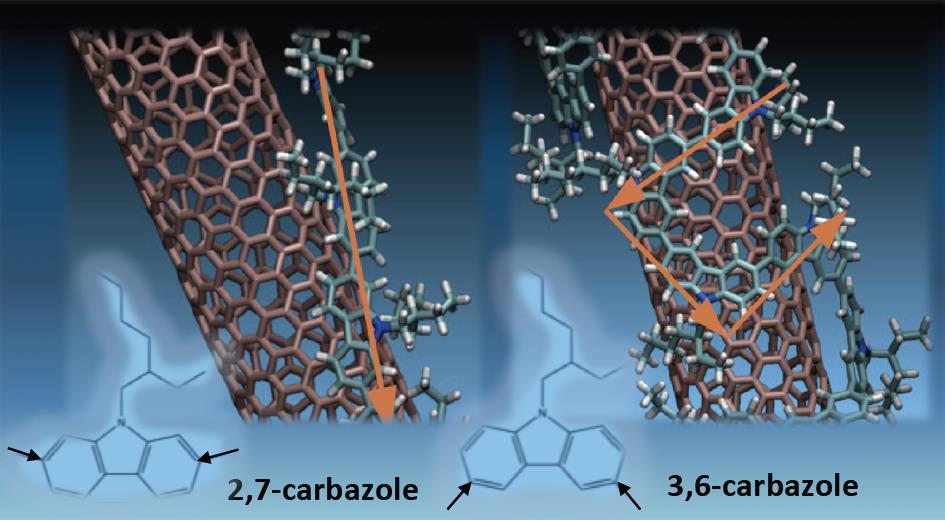Morphology and optical response of carbon nanotubes functionalized by conjugated and bio Polymers
Dispersion and chirality selectivity in carbon nanotubes (CNTs) via chemical functionalization has been of tremendous interest and extensive investigations for last decade to achieve the full potentials of CNTs. However, there is still a long way to go for a satisfactory solution. Dr. Kilina’s group applies DFT and semiempirical methods together with classical molecular dynamics to get insights into structural characteristics of polymer and small molecule binding to CNTs. This allows them to establish the structure-property relationship of the polymer-nanotube interface to improve their optical and transport properties, while getting understanding on conditions for CNT dispersion and chirality separation. One of the most important results they obtained is the prediction on increase of luminescence intensity of carbon nanotubes via covalent functionalization (Nano Lett. 2012, 12, 2306; J. Chem. Phys. 2012, 413, 89). It was found that depending on the adsorbant positions, the chemi-sorption significantly modifies the optical selection rules. These results explain and rationalize recent experimental data on emission spectroscopy of chemically doped CNTs and suggest that enhanced emission efficiency of CNTs can be achieved via selective chemical functionalization.

Other Dr. Kilina’s work presents a systematic theoretical investigation of morphology, electronic structure, and optical properties of CNTs non-covalently functionalized by the conjugated polymers (J. Phys. Chem. C 2012, 116, 6831). While the majority of previous theoretical studies have been focused on the structural aspects of SWNT/polymer hybrids, here Dr. Kilina’s group address the question of how different PPV polymer conformations adsorbed on the nanotube surface affect the optical response of both components – the nanotube and the PPV oligomer. Next, working in collaboration with experimentalists from NDSU, Prof. Kose, they have revealed and explained the trends in dependence of CNTs dispersion on the type of the polymer isomer, the polymer length, and diameter of the CNT (RSC Advances). Although the obtained results do not detect certain chirality selectivity of CNTs, conditions affecting CNT-polymer interactions and thus, dispersion and photophysical properties of CNTs were clearly identified.

